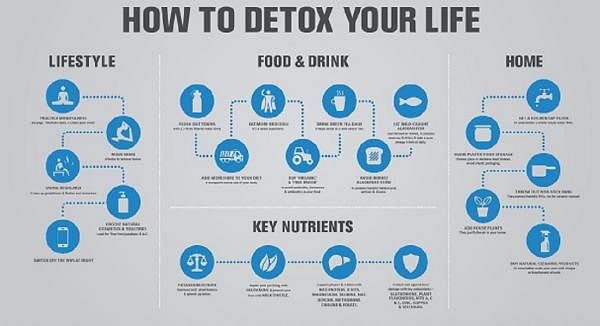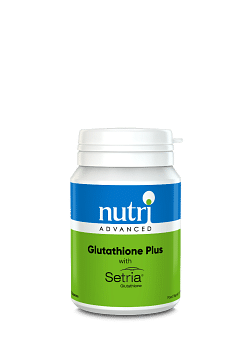How to Effectively Support Optimal Glutathione Levels
Why you can trust Nutri Advanced Every article on our site is researched thoroughly by our team of highly qualified nutritionists. Find out more about our editorial process.
Glutathione – Does it always need to be liposomal?
Glutathione is often referred to as the master antioxidant.
Echoing wise words of internationally-renowned naturopath and detoxification expert, Dr Joseph Pizzorno, “it is hard to overstate the importance of glutathione”.
In a nutshell - The science of glutathione
• Glutathione is a tripeptide made up of amino acids cysteine, glycine & glutamic acid. It is found in high levels in most cells in the body
• Glutathione exists in cells in two states; reduced glutathione (GSH) & oxidised glutathione (GSSG)
• Reduced glutathione is considered to be one of the most important scavengers of reactive oxygen species (ROS). It is a vital intracellular and extracellular protective antioxidant and supports the immune system too
• Under conditions of oxidative stress, GSH is oxidised to GSSG, thus the ratio of GSH: GSSG is altered. The ratio between GSH: GSSG determines cell redox and is considered a valid marker of cellular toxicity
• The accumulation of GSSG due to oxidative stress is considered to be directly toxic to cells
• In a resting cell, the GSH: GSSG ratio typically exceeds 100:1, while in various models of oxidative stress, this ratio has been found to be as low as 10:1 and in some cases, even 1:1
• Even marginal reductions in GSH may impair immune function and increase susceptibility to a wide range of toxins and oxidative damage. Low levels of GSH are associated with a wide range of chronic diseases
• Cellular and mitochondrial levels of glutathione are directly associated with health and longevity. GSH status has also been found to parallel telomerase activity, an important biological marker of longevity
• Ensuring the body has optimal availability of glutathione is vital to maintain health, protect against toxins and promote longevity.
References:
1. Carelli S, Ceriotti A, Cabibbo A, Fassina G, Ruvo M, Sitia R. Cysteine and glutathione secretion in response to protein disulfide bond formation in the ER. Science. 1997; 277: 1681–1684.
2. Locigno R, Castronovo V. Reduced glutathione system: role in cancer development, prevention and treatment (review) Int J Oncol. 2001; 19: 221–236.
3. Noctor G, Foyer CH. Ascorbate and glutathione: keeping active oxygen under control. Annu Rev Plant Physiol Mol Biol. 1998; 49: 249–279.
4. Townsend DM, Tew KD, Tapiero H. The importance of glutathione in human disease. Biomed Pharmacother. 2003; 57: 145–155.
5. Chai YC, Ashraf SS, Rokutan K, Johnston RB, Jr, Thomas JA. S-thiolation of individual human neutrophil proteins including actin by stimulation of the respiratory burst: evidence against a role for glutathione disulfide. Arch Biochem Biophys. 1994; 310:273–281.
6. Shen C.K. Cellular thiols and redox-regulated signal transduction. Top. Cell. Regul. 2000; 36: 1–30.
7. Zhang H, Forman HJ (2012) Glutathione synthesis and its role in redox signaling. Semin Cell Dev Biol 23:722–728.
8. Budihardjo I, Oliver H, Lutter M, Luo X, Wang X (1999) Bio- chemical pathways of caspase activation during apoptosis. Annu Rev Cell Dev Biol 15:269–290
9. Jollow DJ (1980) Glutathione thresholds in reactive metabolite toxicity. Arch Toxicol Suppl 3:95–110
10. Ellouk-Achard S, Levresse V, Martin C, Pham-Huy C, Dutertre- Catella H, Thevenin M, Warnet JM, Claude JR (1995) Ex vivo and in vitro models in acetaminophen hepatotoxicity studies. Relationship between glutathione depletion, oxidative stress and disturbances in calcium homeostasis and energy metabolism. Arch Toxicol Suppl 17:209–214
11. Townsend DM, Tew KD, Tapiero H (2003) The importance of glutathione in human disease. Biomed Pharmacother 57:145–155 12. Nuttall SL, Martin U, Sinclair AJ, Kendall MJ (1998) Glutathione: in sickness and in health. Lancet 351:645–646
Julius M, Lang CA, Gleiberman L, Harburg E, DiFranceisco W, Schork A (1994) Glutathione and morbidity in a community- based sample of elderly. J Clin Epidemiol 47:1021–1026
12. Pizzorno J. Glutathione! Integr Med 2014 Feb; 13(1): 8-12
How to support optimal glutathione levels
1. Reduce overall toxic load – An elevated toxic load can deplete glutathione, so identifying ways to reduce your overall toxin exposure is a crucial place to start. This helpful visual shows simple ways to reduce toxic load.
2. Support bodily production of glutathione – Second step is to make sure your diet contains the ingredients needed to make, protect and recycle glutathione. Cysteine is one of 3 amino acids needed to make glutathione and this is often considered to be the rate-limiting step in its production. Supplemental N-acetyl cysteine (NAC) or dietary intake of organic, grass fed whey protein is a great way to boost levels of this important amino acid. Alpha lipoic acid (ALA) may also be useful to support bodily glutathione levels too. ALA has been shown to increase both intra- and extracellular levels of glutathione in T-cell cultures, human erythrocytes, glial cells, and peripheral blood lymphocytes.1
3. Consider glutathione supplementation if increased need - For some people, supplementation directly with glutathione may be the most effective way to boost levels, and this may be especially true when genetic SNPs involved with glutathione status have been identified. Taking glutathione orally is not without problems however, as it is known to have poor bioavailability, and some studies have found this to be an unreliable method of increasing glutathione. Many manufacturers have tried to address this problem by developing innovative delivery methods such as liposomal forms to improve bioavailability. Unfortunately, these delivery methods may be unstable and can also be very costly to produce, resulting in prohibitively expensive supplements.
Setria® is a form of reduced glutathione which has demonstrated enhanced bioavailability in a randomised controlled trial, but without expensive delivery methods, making it an exciting and affordable, research-backed option for oral glutathione supplementation.
Study details
Randomised controlled trial of oral glutathione (Setria®) on body stores of glutathione
Study aims: The study objective was to determine the long-term effectiveness of oral supplementation with reduced glutathione (GSH) on body stores of GSH in healthy adults.
Study methods:A 6-month randomised, double-blinded, placebo-controlled trial of oral GSH (250 or 1,000 mg/day) on GSH levels in blood, erythrocytes, plasma, lymphocytes and exfoliated buccal mucosal cells was conducted in 54 non-smoking adults. Secondary outcomes on a subset of subjects included a battery of immune markers.
Study results: GSH levels in blood increased after 1, 3 and 6 months versus baseline in both doses. In most cases, the increases were dose and time dependent, and levels returned to baseline after a 1-month washout period. A reduction in oxidative stress in both GSH dose groups was indicated by decreases in the oxidised to reduced glutathione ratio in whole blood after 6 months. Natural killer cytotoxicity increased twofold in the high-dose group versus placebo at 3 months.
Study conclusion: These findings show, for the first time, that daily consumption of GSH supplements was effective at increasing body compartment stores of GSH.
References:
1. Han D, Handelman G, Marcocci L, et al. Lipoic acid increases de novo synthesis of cellular glutathione by improving cystine utilization. Biofactors 1997; 6: 321-338.
2. Richie Jr JP, Nichenametla S et al. Randomised controlled trial of oral glutathione (Setria) on body stores of glutathione Eur J Nutr (2015) 54: 251-263
This website and its content is copyright of Nutri Advanced ©. All rights reserved. See our terms & conditions for more detail.
Nutri Advanced has a thorough research process and for any references included, each source is scrutinised beforehand. We aim to use the highest value source where possible, referencing peer-reviewed journals and official guidelines in the first instance before alternatives. You can learn more about how we ensure our content is accurate at time of publication on our editorial policy.
Most Popular Articles
-
7 Surprising Ways To Support Your Magnesium
If you are displaying signs of a magnesium deficiency, here are 7 ways to boost your magnesium levels that are easy to incorporate into your daily life. -
5 Best Vitamin C Supplements Picked By Our Experts
Learn more about the different types of vitamin C, the different benefits you get from different types, and what you get for spending more on a good supplement. -
Top 5 Vitamins For Energy And Tiredness Picked By Our Experts
The 5 best and most important vitamins for energy & tiredness including B vitamin food sources & best supplement forms for energy. -
Benefits of Myo-Inositol for Polycystic Ovary Syndrome (PCOS)
In this research review article, we take a closer look at a lesser-known natural compound called myo-inositol that has been found to have significant potential to improve many of the prevalent features of PCOS. -
Top 10 Reasons to Give Your Kids Omega-3
Read the top 10 reasons that kids should have plenty of Omega-3- an essential fatty acid- including for depression, brain function, sleep & reading/maths skills.











